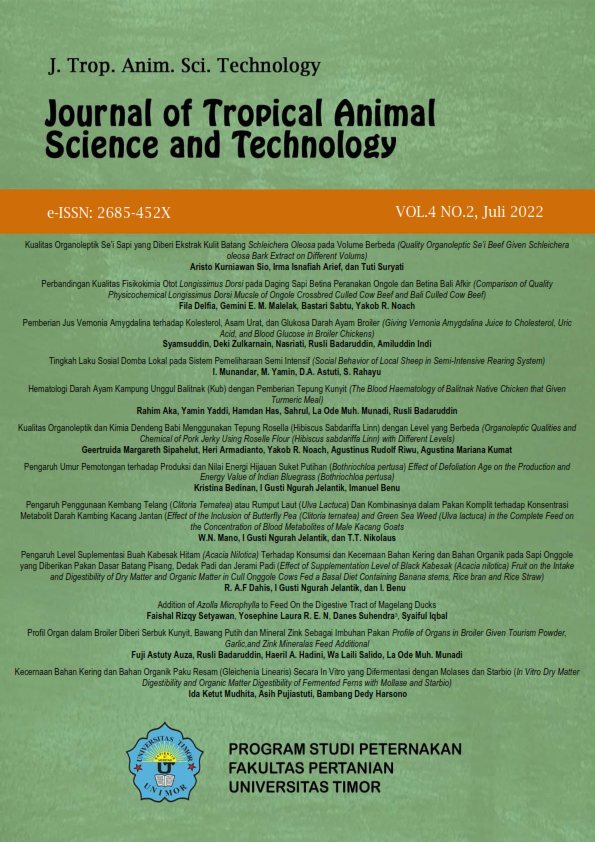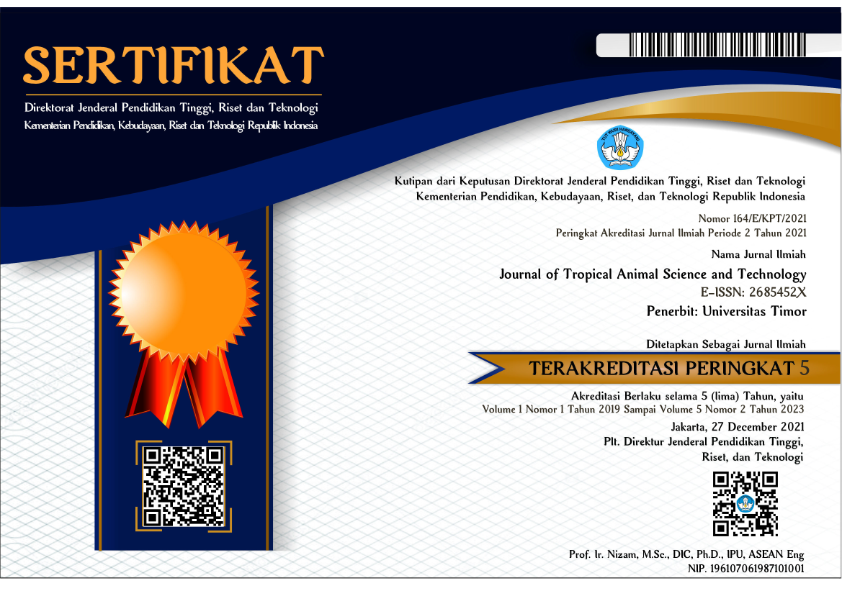Quality Organoleptic Se’i Beef Given Schleichera oleosa Bark Extract on Different Volums
DOI:
https://doi.org/10.32938/jtast.v4i2.2481Keywords:
Beef Se’i, Schleichera oleosa Stem Bark Extract, OrganolepticAbstract
This study aims to determine the organoleptic quality of beef Se’i which was given Schleichera oleosa bark extract at different levels. Se’i beef was processed by adding 0 mL of Schleichera oleosa bark extract (without the addition of extract), 20 mL, 30 mL and 40 mL, then the beef Se’i was smoked in a smoker house for ± 1 hour at a temperature of 80-90˚C. Se’i beef was then tested by 30 semi-trained panelists who were panelists who often consumed beef Se’i. The variables observed in this study included color, aroma, texture and taste of beef Se’i. The data obtained were analyzed statistically with a nonparametric alternative test, namely Kruskal Wallis. If the Kruskal Wallis test showed a significant difference (p<0.05), then it was continued with the Post Hoc Test using the Mann Whitney test. Panelists responded to the color of beef Se’i best in the addition of 30 mL of Schleichera oleosa bark extract with an average value of 4.37. Beef Se’i with the addition of Schleichera oleosa bark extract produces a reddish color compared to Se’i without the addition of Schleichera oleosa bark extract which has a more blackish color. The best beef Se’i aroma was shown in the addition of 40 mL of Schleichera oleosa bark extract at 5.30 followed by the addition of 30 mL and 20 mL of extract. 30 mL of Schleichera oleosa bark extract provides a distinctive taste that is favored by panelists. The best taste of beef Se’i in the addition of 30 mL of Schleichera oleosa bark extract was 4,70 followed by the addition of 20 mL of Schleichera oleosa bark extract, which had a second average of 4.50 and 40 mL, which was 4.16. Meanwhile, the lowest mean value was in the treatment without the addition of Schleichera oleosa bark extract, which was 4.00. Panelists assessed the best texture of beef Se’i produced in the addition of 30 mL of Schleichera oleosa bark extract, which was 5.26. Se’i beef with the addition of 40 mL of Schleichera oleosa bark extract had a second average of 5.23 and 20 mL, which was 4.50. Meanwhile, beef Se’i without the addition of Schleichera oleosa bark extract had the lowest average of 4.06.























